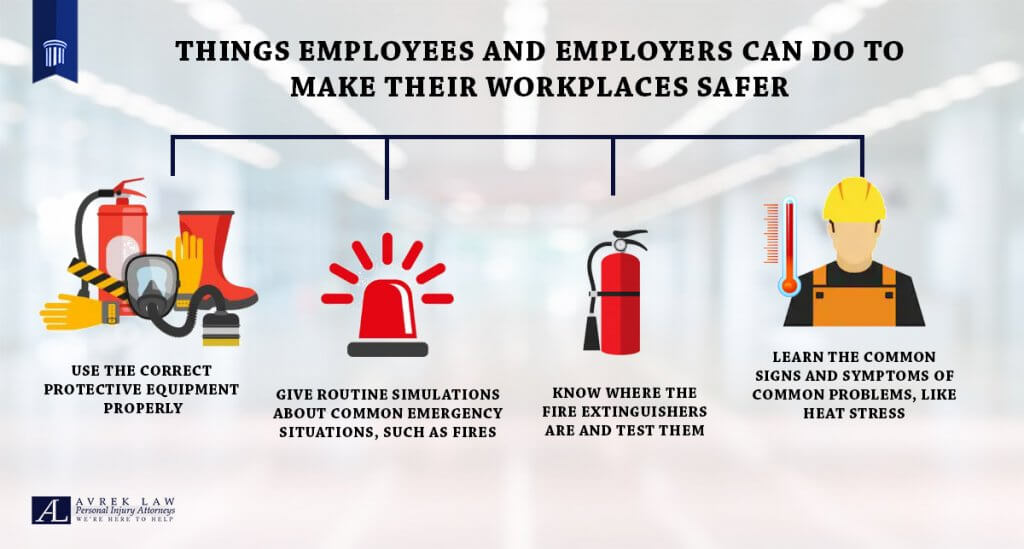Although there has been a significantly observable decline in the cases of workplace-related accidents resulting to injury, we still cannot deny the fact that more than four thousand people had risked losing their lives while at work. And this happened despite the policies, campaigns, and other initiatives set out by the U.S. government to protect its workers. We all seem to take safety at work for granted. As an employer, it is your ethical responsibility to take care of employees working for you, failing which, there just might be a disaster waiting to happen.
Besides causing injury, workplace accidents also cost time and money. On a more practical note, you could also be held accountable and made to pay a penalty that could wipe out profits. The Occupational Safety and Health Administration (OSHA) rules punish a violation of safety standards that could result in death or serious physical harm to an employee. Therefore, developing a workplace safety policy and abiding by it is an absolute necessity.
Rules that Identifies a Safe Workplace
The government enacted the occupational safety and health act in 1970 to ensure that employers will look after and always consider the safety of their workers in every job design, task assignments, and work-flow process. Through this law, the government advocates for each employer to be responsible for their employees by limiting the incidences and risks of job injuries, illnesses, and deaths.
OSHA provides safety and health regulation programs that companies and employees must adhere to. By inspecting work-sites and visiting legally registered establishments, the OSHA ensures that every worker can access their right to a hazard-free, healthy work environment.
Ensuring Safety at Work
OSHA encourages companies and business owners to observe safety procedures in their workplaces by taking note that they have the following:
Adhere to Administrative Safety Requirements
Employers are required to have a safety development program that is acknowledged by all of their workers. They should also educate their employees about the company’s emergency plans, so that each of them would know what to do in case emergencies, such as fire breakout or earthquakes, happen.
Ensure That the Office or Site Is Not Exposed to Hazardous Chemicals and Leak
Regular maintenance check-up of pipes, facilities, equipment, and machines (If present) is a must for companies, especially if the nature of their business involves handling dangerous chemicals. Every month, the management should conduct a safety audit of all the instruments and facilities within their establishment to make sure that dysfunctional or defective supplies wouldn’t expose their workers to risks and injuries.
Invest in Personal Safety Tools, Equipment, and Facilities for Employees.
The importance of providing safe and durable equipment for workers, especially in the construction industry, is paramount of all safety regulations. Companies and employers alike must invest in new tools and facilities that are safe and easy to use; it will not just make the workflow process smoother, it will also reduce the insurance cost and medical expenses that they are going to shoulder if their employees meet accidents while at work.
Nowadays, most offices are equipped with ergonomically designed tools and facilities. Each space usually employs architectural designs that reduce the risk of fire; electrical connections are carefully planned to minimize electrical short circuits. There are also material handling tools that are available in the market. For instance, construction companies can opt to buy forklift-able industrial hoppers to ease their workers the difficult task of manually transferring heavy materials. The metal hopper will not just reduce various operation costs and work delays, it will also minimize risks of on-site injury.
Be Strict in Training Your Employees About the Proper Handling of Each Tool and Instruments
As much as possible, ensure that all of your workers take safety training procedures seriously. Improper training of personnel is oftentimes the root cause of most accidents in the workplace.
Conduct regular meetings and inspection, and even introduce an incentive program if need be, to increase awareness about safety measures at work. Try establishing an award for “safe employee of the month”, or run a contest inviting suggestions for improving safety.

What to Do When Your Workplace Is Unsafe?
If you think that your workplace is unsafe, it is always better to bring this to your employer first. If they ignore your words, then you can file a complaint at OSHA. You don’t need to be scared since they will not reveal anything about your name to your employer if you tell their staff not to.
And if you believe your employer is putting you at risk of suffering an accident at work, contact us!
How much is your case worth?
Get a free case evaluation